I commented on Flickr as important as it for Leica to continue to launch cameras like the M6 reboot, it was hardly gonna attract the kids. That’s especially true when you can still by a decent AF SLR for the price of a takeaway pizza. Some said I was wrong those days are gone. But I stand by that comment. But even I surprised myself with the EOS 500N. A SLR for a quid in 2023 and they still sell for as little as 99p despite being rather good.
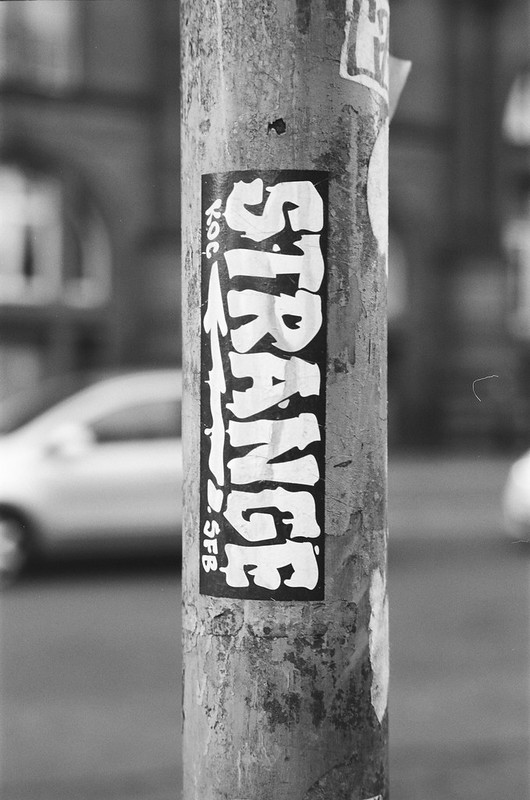
And this is no cheap ‘n’ cheerful budget number. Granted this is no prosumer wet dream. But this is one of the camera that cemented Canon dominance and over 2 decades later is more than worth a quid.

If the EOS 500N sound unfamiliar it was also sold as the New EOS Kiss in Japan and the EOS Rebel G in North America.
Canon EOS 500 and 500N
Canon was already in ascendance when this camera was launched in 1996. In less than a decade Canon had dominated the market with it’s EOS bodies and EF lenses a position it still holds today.
It was an evolution the consumer focused 1992 EOS 500 (aka EOS Kiss or EOS Rebel XS) with a tweak. Both are described today as a mid range consumer model. In Europe and Japan they were both sold along side the budget and crap EOS 5000 (more on that later) but in the US the Rebel XS and our later Rebel G were the entry models.
The EOS 500 replaced the older 1000 Series models
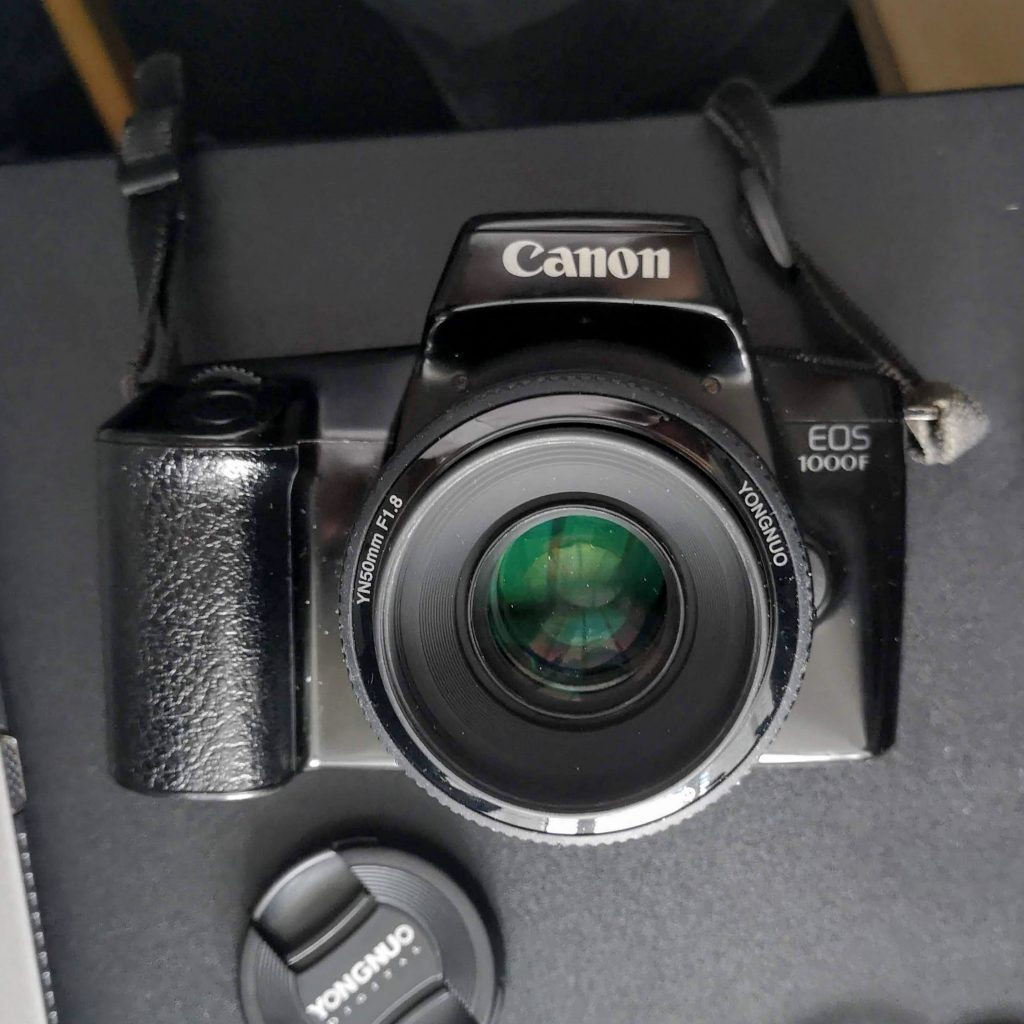
The 500 was the lightest SLR at launch and designed as its predecessors to be used by those with both little or no experience but leave enough on board for more demanding SLR shooters. But we know Canon was squarely aiming it at the former.
“..the camera became a major hit among young mothers and family snapshooters. It maintained top market share for an extended period.”
Canon Museum
Hmm shades of the Nikon EM for ladies there.
EOS 500N Design
The EOS 500 took over the reigns from the EOS 1000 series and both it and the 500N kept that near perfect canon layout which you’ll still find on many of their current digitals like the EOS 5D Mark IV. You got 3 focus points to the one of the 1000 models
The 500N doesn’t play too much with the formula. The headline differences to the 500 are a newer AF module and E-TTL flash support. The latter offering high speed flash sync with selected accessory speedlites.

Controls on the EOS 500N
Unlike some rival (cough Nikon F50 & F70 cough) it is a breeze to use. Left of the pentaprism hump you get a mode dial (more on that later) and on the right LCD. Canon use a vertical command dial between that and the shutter button. I prefer a thumb level horizonal dial on the rear but that is a matter of taste.
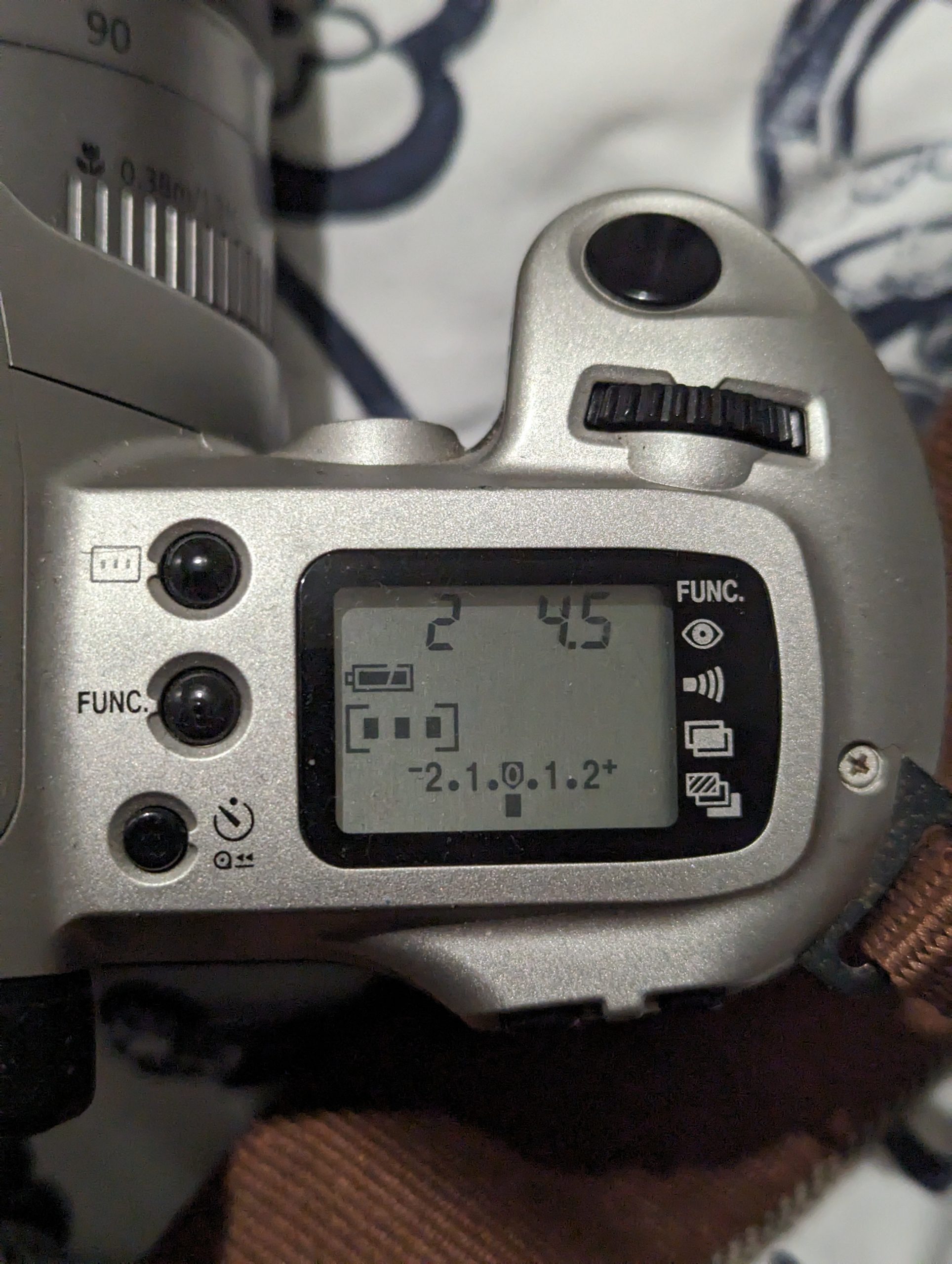
Beyond that you have 3 buttons beside the LCD. One lets you select between automatic focus point select or predetermine which focal point you wanna use. The FUNC(tion) button lets you select turn on and off red eye for built in flash, beep for focus lock, multiple exposure and automatic exposure bracketing (AEB). The third activates the timer.
Behind at thumb level you have buttons for AEL and exposure compensation. The latter can also be held down in manual mode allowing you to adjust aperture.
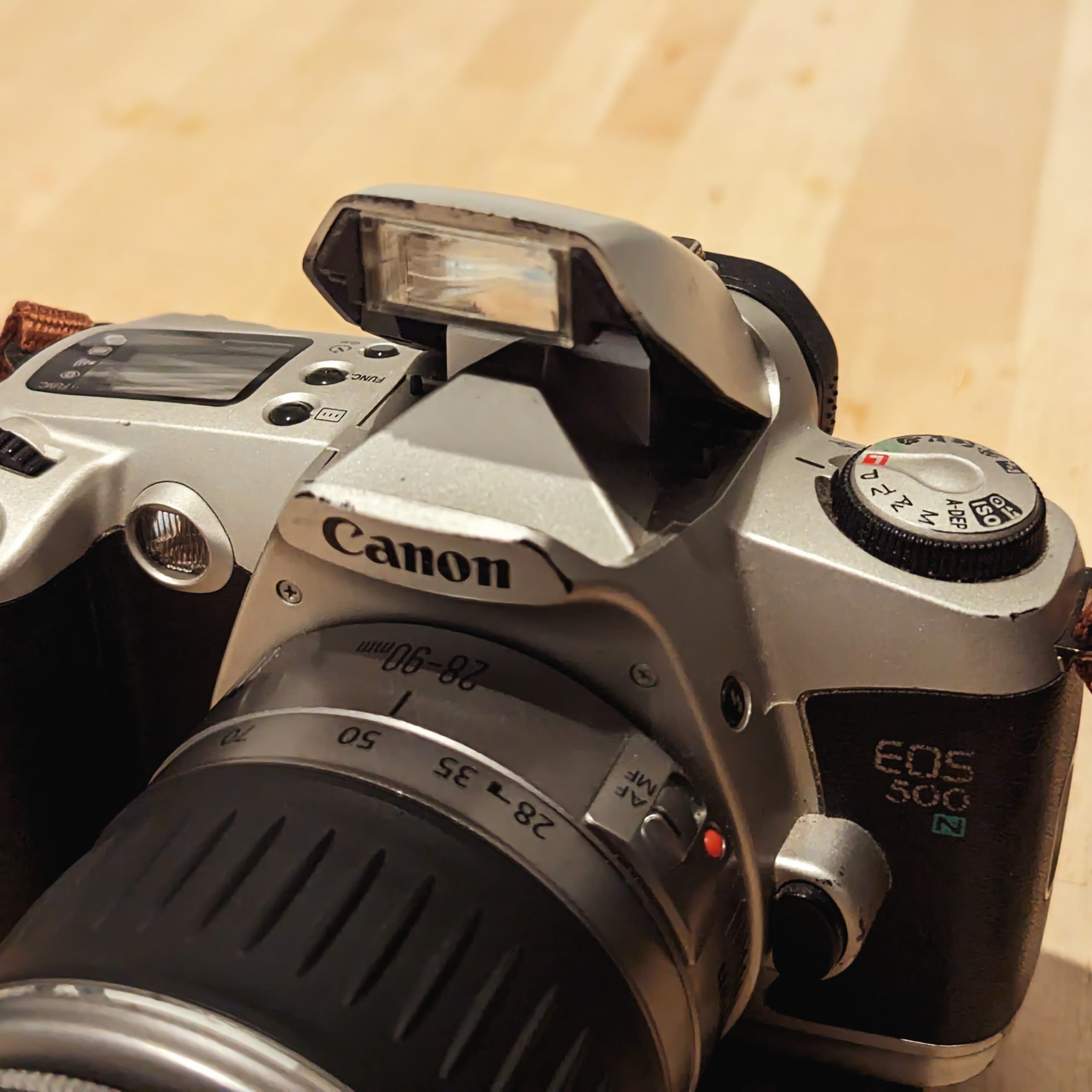
The flash does not automatically pop up in creative (PSAM) modes but does so in some simple modes like auto and portrait. So a button on the lens mount allows you to trigger the pop up action.
And that’s it in the way of controls bar the lens mount disengage button but….
-And Other Version ?
The Japanese EOS Kiss offers a panorama mode – I assume this is the faux Halina panorama type not Xpan style.
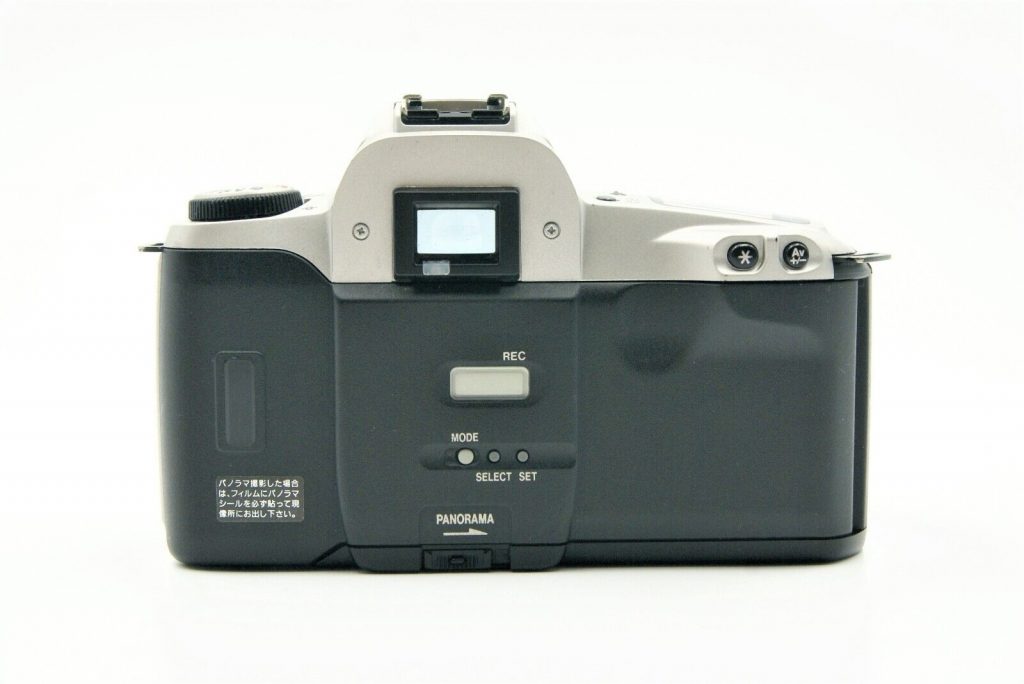
QD back versions were available as per the Kiss above.
Build
A lot of plastic means you get a light weight 350mg. even the lens mount is plastic. Weirdly almost every EOS 500N I’ve seen is 90’s two tone silver and black and most Rebel G are all black. You could buy the camera under both names under both colour schemes but clearly the average mid 90’s consumer in the US had better taste.
The only other clue to its age is the AF assist lamp.
There is no DoF preview and the cable point is proprietary. Standard tripod point with metal bolt in line with lens.
Wear on the silver portion of 2 tone models is evident as you can see on my and others photos here.
EOS 500N Core spec

Auto focus
This uses a TTL-SIR (Secondary Image Registration) phase detection type AF system . Using Cross-type Multi-BASIS (|+|) this upgrade system allows not just for automatic point selection but unlike the 500 you can lock to a single point. It works between EV100ISO 1.5-18. The screen does not display active focus point but the LCD below does show. The camera has beep and a focus lock indicator in LCD.
The AF servo offers One-Shot AF/Predictive AI Servo AF. You can’t select the mode and and in the PSAM modes and others the camera will try to guess for you . By selecting certain scenic modes nyou can for the camera to keep to one shot or AI servo (e.g. portrait v sports)
It’s reasonably fast although does struggle in low light.

Metering
6 zone matrix metering is default mode except in manual when centre weight is used. Sadly this is the only mode which gives you centre weighting. In the creative modes (PSAM plus A-Dep) you can switch to partial (aka spot) metering with 9.5% circle.
Canon’s metering was good by now, not quite in Nikon’s league of 3D matrix and colour metering but good enough.
The electronically controlled vertical shutter offers speeds in half steps were available from 30sec to 1/2000 sec. There is a bulb mode but you will need a proprietary (there are clones) wired Remote Switch RS-60E3. This thankfully widely available.
EV compensation and 3 shot auto bracketing (both ±2 EV in ½EV steps) is possible.
Power, Drive and ISO/DX
The basic camera uses 2 lithium CR123A batteries. You can track down a BP-8 battery pack for using cheaper and potentially rechargeable AA batteries.

The standard drive is pretty quiet for a budget camera but only 1fps. It has atypical autoloading system.
Both DX film (25-5000ISO ) and manual ISO (6-6400ISO) setting is possible. You can even over-ride DX.
A weird not obvious issue is the camera uses an infra-red sensor on the film advance. This will obviously fog any IR film.

Flash
Built in TTL Flash is GN 12 (m/100ISO). That neither brilliant but about average for consumer AF SLR.
The hot shoe is geared for canon branded speedlites and will support TTL, A-TTL and the newer E-TTL modes. This means it can support both the early A-TTL only EOS speedlites and the newer E-TTL system which launched in 1995 (and allows for high speed sync)
Viewfinder & LCD
Pentaprism finder without diopter correction (-1 diopter applied for eye relief). You can buy diopter viewfinder lens to correct. It’s a bit darker than the Nikon F50. The laser etched screen is logical. It is marked for Centre weighting and partial (spot) metering zones as well as the 3 focal points but these are not LED lit. The LCD below shows which focus point is being used

Below the screen is an easily read LCD. It shows more detail than the 500. So you get the shutter, aperture, focal points and EV metering bar as shown above. You’ll also get focus lock, AEL, flash (inc high speed sync). Nice clear system.
Top LCD is easy to read with shutter, speed aperture , frames remaining as well as EV compensation and function settings as appropriate.
Modes
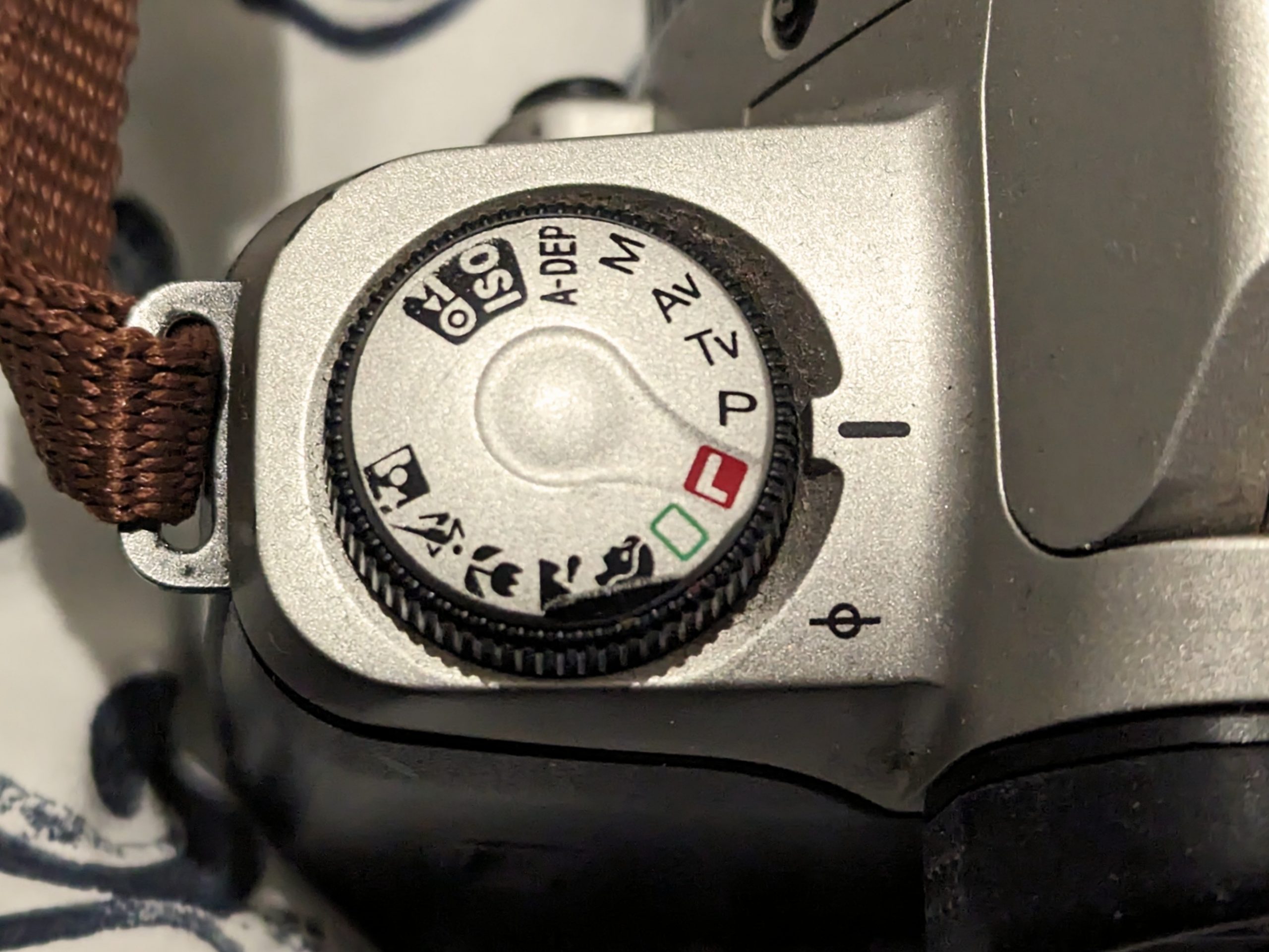
The mode dial looks pretty typical of EOS cameras both film and digital. Canon divide it into creative with the classic PSAM (or in Canon’s case P Tv Av & M) plus A-Dep mode The latter is automatic depth of field mode. We’ve seen this before and it’s geared to allow you to shoot both a near subject with a landscape both in focus. But here it is aided by the 3 focus points allowing it to calculate both near focal point and far focus point. The camera can then exploit aperture and set a mid focus point using depth of field to keep everything in focus
The so called programmed image control (aka simple) modes use limited preset setting. You get the green square auto mode (think dumbed down program with limited options) portrait, landscape, macro , sports and night scene modes.
The dial also is used to manually set ISO if you need to do a huge advantage over Nikon models mid and entry models.

Lens Support
It will work with almost any canon own brand EF lens. Canon’s website even states about their new EF lenses
“Compatible with every EOS camera ever produced”
https://www.canon.co.uk/lenses/compatibility/
Whilst some lens feature may be absent this camera will be quite happy with the ultrasonic motors and utilise the IS stabilisation system.
It will not work with EF-S (APS-C dSLR), RF or M digital lenses.
It suffers from issues with newer 3rd party lenses that often ditch the firmware for film bodies. The Yongnuo YN50 F1.8 as usual looks like it is working up until you hit the shutter and you get an battery death error.
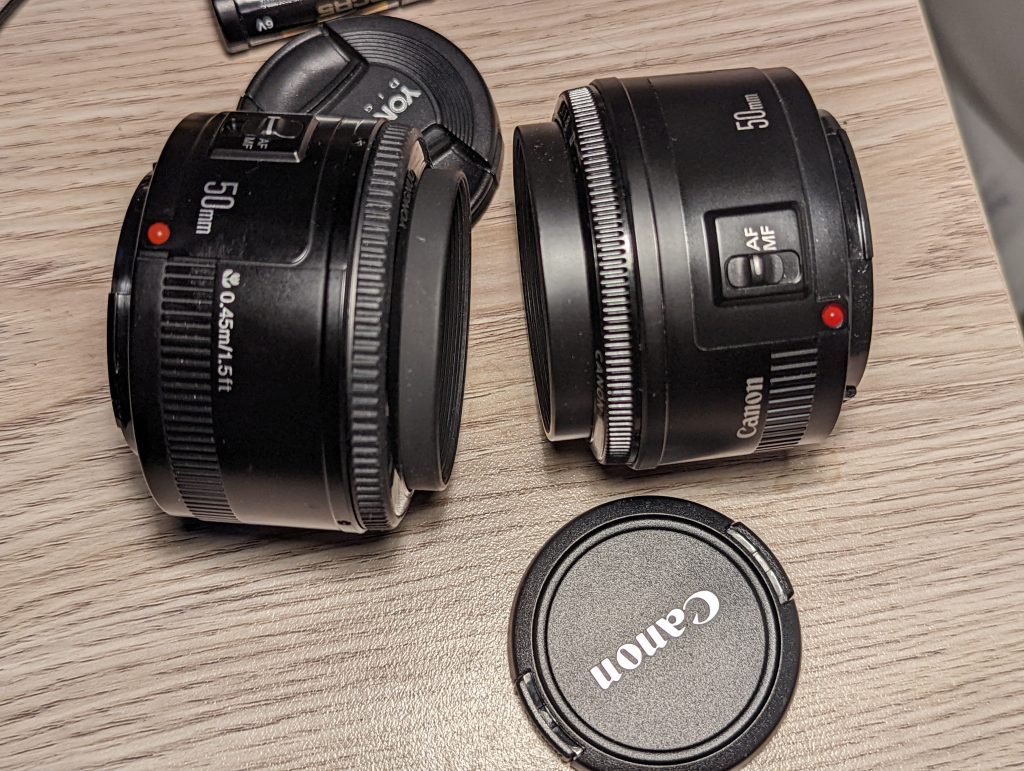
You can use a host of vintage manual focus lenses. The camera can even stop down meter although there is no focus assist. Canon sold FD to EF adaptors but you can buy adaptors to other lenses. It seems less picky than the 1000F. It works fine with any of my unbranded M42 to EF adaptors that I use unlike some older models. Be aware that some lenses systems because of flange distance may not be focusable to infinity without additional lenses. And watch out for some lenses protruding into your mirror box area potentially causing damage.
-Kit lens ?
The 500N was often bundled with the 28-80mm 3.5-5.6 II USM kit lens as well as the cheaper non USM 35-80mm 1:4-5.6 III lens. Not anyone’s favourite mid range EF zooms out there but do okay for a plastic budget numbers and esp if has an ultrasonic motor.

Brucie Bonuses – Cap and strap
The £1 camera was VGC and came with it’s rubber eyecup (often missing but easily replaced). I got a body cap and clean but used EOS strap into the deal. If the camera was toast i could have sold those both for a couple of quid.
In use
All images here were taken with the Canon EF 28-90mm 1:4-5.6 III. This ironically is the budget Kit zoom from a 300X. So a much later lens than the kit the 500N would have been issued. It lacks USM or IS, but while it’s no classic but performed okay

As mentioned the AF is fast enough with the camera auto selecting one of the 3 points. I broadly can’t fault it but as you’d expect it seeks a bit more in low light.
Exposure was on the money for shot without very complicated lighting.
The camera performed as I’d expect and was easy to use. I’ll not discuss optics as that’s down to the lens and my ineptitude
Rivals and Alternatives
Well obviously we need to mention the 2 cameras that dovetail it to start. The EOS 500 shares much of the same design but has an older AF unit. The EOS 300 series followed with the EOS 300 (EOS Rebel 2000/ Kiss III offering 7 AF points and a whopping 35 segment metering. The following models would refine it further but I’d argue that these improvements are less obvious than swapping from a EOS 1000 series to a EOS 500 or 500N.
Below the 500N sits the EOS 5000 (Asia EOS 888). A camera that was not sold in either US or Japan. That’s because it’s crap. It has no command dial and the mode dial has a set of shutter speeds on it in old Skool style allowing you to shoot in SP (Tv in Canon terms) or a small number of auto everything modes but no manual. It would be replace by the more sensible EOS 3000 (EOS 88 in Asia) which on paper sounds like an EOS 500 rebadged.
The above EOS 50 (ELAN II) & EOS 5 are more sought after and command a much higher price. But that’s for a better build and that weird ESP eye control tech.
In era Nikon rivals were the F70 and F50, arguably the worst Nikon models ever made from an ergonomic PoV. The F60 and F65 would follow the F50 and are better choices (the F65 allows for faster AF-S lenses which can match EF lenses for speed). But by then the 500n was being retired for the EOS 300.
Cost
Granted a few sold recently for a quid or 2 but most body only versions go for £5-10 or more if tested. But the market is volatile and I’ve seen film tested ones sell for 99p. The Panorama Kiss models seem to command higher prices.
If you’re lucky you can snag a model with a lens for £10 or less. I still see examples selling for 99p. Expect to pay more with a lens but that said the camera with kit non USM lens often sells around the £18-30 mark.

Final Thoughts
Seriously this is decent enough for a cheap AF SLR camera. You can pick one up in 2024 cheaper than you can buy a current plastic fantastic and potentially with luck a okay kit zoom.
It will not be remembered as classic of SLR but was one of the Cameras that help Canon maintain top dog position. It is more than capable of capturing a good image. For peanuts you get a tech loaded SLR that beat Nikon’s equivalent except perhaps in metering capabilities. It will suit digital shooters stepping into film well especially if you’ve used an Canon EOS dSLR. But that said it pretty logical even if you’re new to Canon’s delights. It will shoot quite happily in most circumstances and feels fresh even almost 30 years after launch.
It’s an incremental improvement over the 500 just as that was over the 1000N/1000NF. The EOS 300 which replaced it was a bigger jump with 7point AF and 35 zone metering.
But 3 AF points and 6 zone metering actually is fine making this a budget gem.
Sources
Mike butkus has both manuals for the EOS 500N (English and German) and oddly for the Rebel G as well. Worth noting the Rebel G is a single PDF where are the English 500N is a two parter.
Uncle Ken Rockwell reviewed this in 2008 and is a still a valid review a 15 years on. One of may favourite upcoming blogs the 3rs (aka Ravoli, Ravoli, Ravoli) shot an especially worn one of these with incredible results

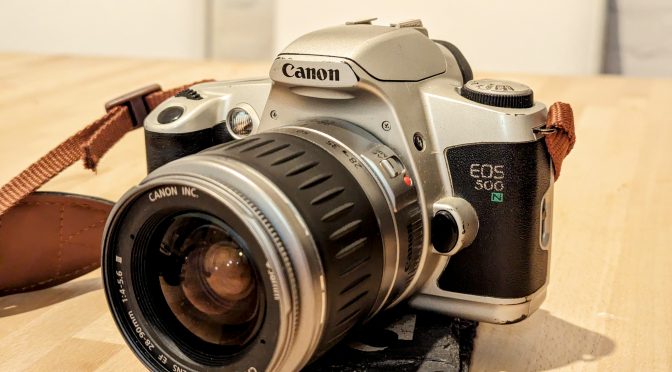

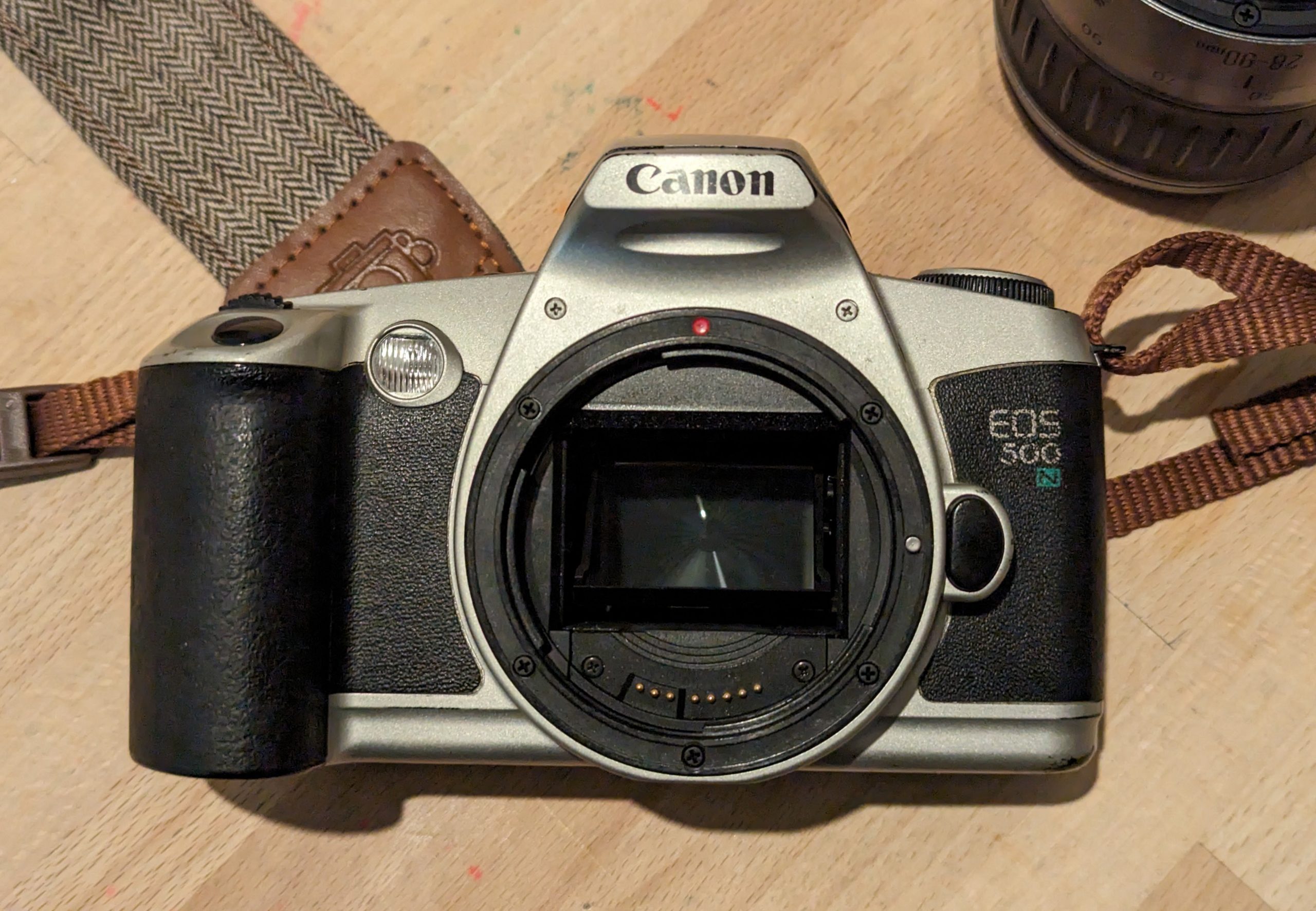

Yeah, these 90’s AF SLRs and the later 90’s/early aughts superzoom point and shoots are where it’s at when it comes to value. I just got two circa 2001 Minolta p&s’s, a Freedom Zoom 115 and 125 (Riva Zoom 115 and 125), for about $10 each, including shipping. They both work perfectly well and make decent photos.
I agree with you about needing something for “the kids” as Leicas are not going to do that. I’m hoping that Pentax’s new camera may help. Fingers crossed!
Have not managed an SLR for a quid, although I was given a K1000 an acquaintance wanted rid of when moving! works perfectly well with Pentax 50 and 28 lens that came with it.
Acquired an Olympus IS-100 for £5 off eBay fully automatic 28-110 fixed lens SLR which produced pictures of similar quality to the Olympus mu-II which goes for 10- 20+ times that price. OK a bit of a lump but I reckon it is an OM mechanism it there.
I have a Canon EOS 300 I bought two years ago (camera + zoom + manual + original papers) for just 30 euros. I saw a post from Tokyo Camera Style and hadn’t realised that the last film cameras from Canon and also Minolta could be that cheap.
I thought about it as a second camera next to my Canon AT-1 and finally use it more because it allows all what an older camera can plus it’s super light and the lenses are good ! With the camera I got the EF 28-80mm f/3.5-5.6 II which some say is bad but it really works better than many some old lenses … Since then, I also got a Pancake EF 40mm f/2.8, a EF 50mm f/1.8 II and a EF 100-300mm f/4.5-5.6 Ultrasonic.
It has only one drawback : it looks modern ! You may find this funny but many shoot analogue because they like steel cameras 😀 A friend recently told me that when you look at the new digital cameras by Fuji, after all an EOS looks very 80s (Luigi Colani design introduced with the T90 ; I had one in the 1990s and loved it so much, such a computer camera). Also it looks modern to other people and look suspicious when shooting with a 1930s Leica or a 1950s TLR will rather bring you smiles.
As a conclusion, better buy a cheap EOS than a ridiculously expensive plastic things that are now sold 50 euros …
I am quite happy with my Canon Rebel X, great when I want something easy to carry and always solid results. My only complaints are the fact that it rolls the whole film out, shoots in reverse order and suck the leader in when rewinding … to be fair the Nikon N75 does the same thing!!! Bot are solid shooters that you aren’t afraid to take out and have some fun with!!!
These Canon EOS models are great when you want point & shoot but with the option of manual focus etc if you don’t like what the camera’s doing. And they often cost less than the batteries to go in them. I’ve got a 300 and a 3000N (Alias Rebel 2000, Rebel XS N) and yes, the basic 5000. The 5000
made great sense as a budget model : Point & shoot, or turn the dial to the “Portrait” position to force a wide aperture to get good separation from the background. Manual focus if needed. And that’s it. Of course now the 300 / 500 / 3000 cost much the same, it’s a bit redundant.
It’s “easy” to stop these cameras from rewinding all the way into the canister : As it rewinds, when the counter gets to say 6, pop open the battery cover. Put the camera into a changing bag, open the back, pull the film canister out and rewind the last bit manually. Easy : )